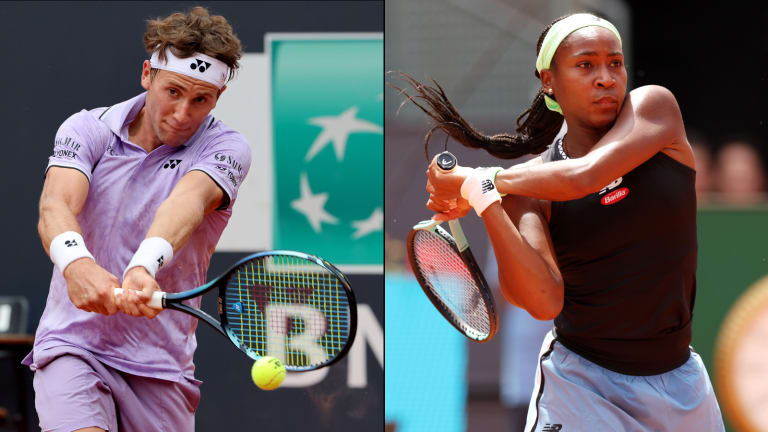Roland Garros
One year later, how’s it looking for Roland Garros finalists Coco Gauff and Casper Ruud?
By May 24, 2023Roland Garros
French Open organizers introduce draw to access ticket sales
By Jan 07, 2025Roland Garros
Coaches Corner: Juan Carlos Ferrero proves essential to Carlos Alcaraz's Roland Garros success
By Jun 14, 2024Roland Garros
What’s next for Novak and Nadal? Four ATP storylines after the Paris fortnight
By Jun 10, 2024Roland Garros
Naomi’s resurgence, Iga on grass: Four WTA storylines after the Paris fortnight
By Jun 10, 2024Roland Garros
Carlos Alcaraz becomes the clay-court champion that he—and we—always knew was possible
By Jun 09, 2024Roland Garros
Coco Gauff wins first Grand Slam doubles title with Katerina Siniakova in dream team debut
By Jun 09, 2024Roland Garros
Coco Gauff is a Grand Slam champion in singles and doubles, exceeding her own expectations
By Jun 09, 2024Roland Garros
From Rafa to Iga: as one owner of Roland Garros departs, a new one has moved in
By Jun 08, 2024Roland Garros
Roland Garros men's final preview: Carlos Alcaraz vs. Alexander Zverev
By Jun 08, 2024Roland Garros
One year later, how’s it looking for Roland Garros finalists Coco Gauff and Casper Ruud?
The American and Norwegian had breakthrough runs in Paris 12 months ago, but the road to Roland Garros has been bumpier this year.
Published May 24, 2023
Advertising
Advertising
Advertising

Gauff had a Grand Slam breakthrough last year at Roland Garros, before taking a one-sided loss in the final.
© Corbis via Getty Images
Advertising

With no Rafa in the picture this year, could Ruud take the final step in Paris?
© Getty Images
Advertising
Advertising

Both Ruud and Gauff come into Roland Garros somewhat under the radar—albeit with runner-up points to defend.